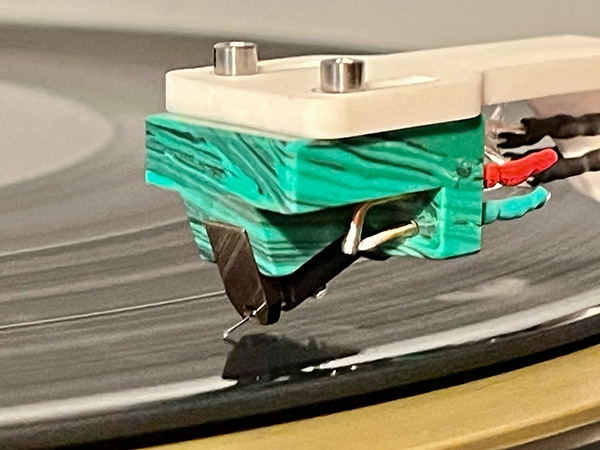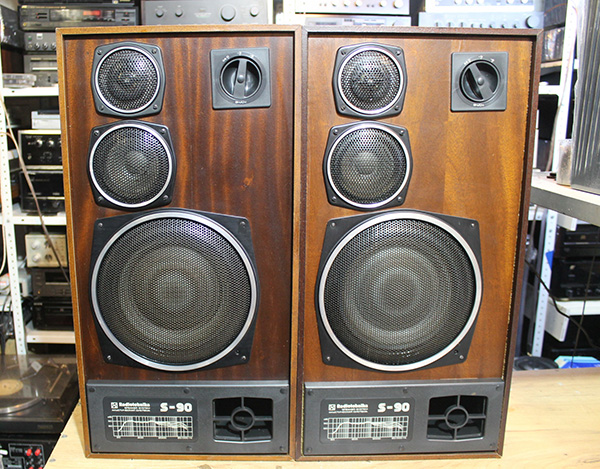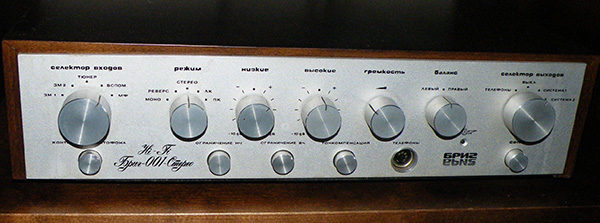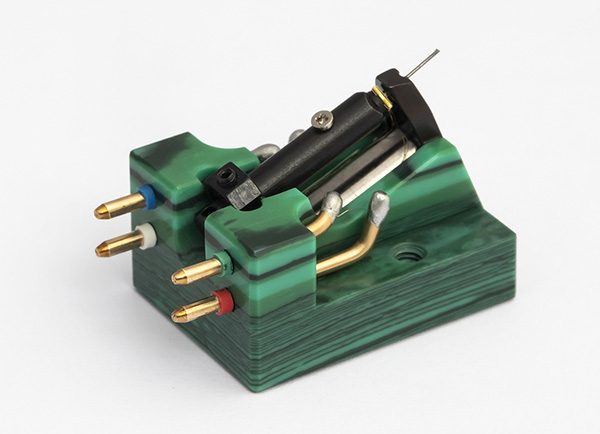| Columns Retired Columns & Blogs |
There's a youtube channel that plays records with a Corvette 038S turntable. Sounds really good.
https://www.youtube.com/watch?v=ZYKrRBo84go

Once we were there, we were more or less free to move around in the capital city Tallinn, but leaving the city was strictly forbidden, except as part of a planned group excursion with our KGB minders—er, "Intourist guides."
Mimi was originally from an island off the west coast of Estonia called Saaremaa. In 1985, it was home to several military facilities, so a visit there was off the table. To get around this, Mimi set up camp inside her room at the Viru Hotel in Tallinn while dozens of long, lost Estonian relatives made the journey to visit her (and the rest of the family) there.
In her room, she doled out the blue jeans, Western music, and other American desirables we had managed to sneak across the border. Each of us had been tasked with bringing two big suitcases filled with all sorts of American goodies. After all, every American tourist needs five pairs of new Levis in various sizes and a pile of candy for a two-week trip, right? When we arrived on the ferry from Finland, the only thing the humorless Soviet border guards confiscated was a vinyl copy of Jesus Christ Superstar.
As Mimi held court at the Viru, my siblings and I headed out into the city to look for interesting stuff. I was already an audiophile, so I was eager to discover the local high-end audio scene, if there was one. If there was, it was well-hidden—not for consumption by visiting Americans or, apparently, the general public. There were a few hard (ie, Western) currency stores where you could find some Western mainstream electronics—more what you might find at Crazy Eddie than at a high-end store like Lyric HiFi—selling for about 10 times the New York City street price. A lot of it, I'd heard, was purchased overseas by Soviet Navy sailors to make some extra cash when they returned home. Few Estonians had access to foreign currency, so this gear was out of their reach.


For regular folks, buying a hi-fi meant saving up for Soviet-bloc offerings from brands like Radiotehnika and Vega, churned out domestically for the masses. Most of the bars in town were using what appeared to be a loose knockoff of the Yamaha NS-1000 called the Radiotehnika S-90, which, though the manufacturer was based in Latvia, apparently was made in Czechoslovakia. Today, the S-90 seems to have a bit of a cult following—for example, a small company in Estonia will rebuild them to modern aesthetic standards (footnote 1). But whether this new enthusiasm is because they were genuinely good or just due to nostalgia, I can't really say.
Incidentally, Radiotehnika, which was founded in 1927 as VEF Radiotehnika RRR, is still around, and they still make a couple of models—the floorstanding SM-300 and S-400M—that closely resemble the S-90.

Anything more exotic than that was elusive, but what I later learned that there was a vibrant underground audio scene, with talented designers pulling whatever strings they could to design and produce quality equipment. One of the first Soviet-made components many considered high end was an amplifier called the Brig 001, designed by Anatoly Likhnitsky and Alla Kalyaeva in the mid-1970s. This was followed by the wild-looking Corvette EP-003 turntable, with its distinctive chrome pool-ball tonearm bearing, and the Amfiton-U-002 amplifier, designed in 1983 by the late Vladimir Shushurin, who went on to become Vladimir Lamm.

All this changed at the start of the 1990s, when the Soviet Union collapsed and the exchange of both ideas and goods between East and West suddenly became much easier. Some of the Eastern bloc's more talented designers, including Shushurin/Lamm and Victor Khomenko, who co-founded Balanced Audio Technology, had already managed to move West before the wall fell, but many more could now gain recognition beyond the Iron Curtain.
Fast forward 32 years, and products from former Eastern European countries like Slovenia, Serbia, Czech Republic, and Poland are widely available worldwide. But high-end gear from the former Soviet states remains less common. The three Baltic states—Estonia, Latvia, Lithuania—are exceptions. They have sent us some truly serious high-end brands, including Estelon loudspeakers and Degritter record cleaning machines, both from Estonia, and Reed turntables and Audio Solutions loudspeakers from Lithuania. You can add Lithuania-made Aidas cartridges to that list.

Aidas
Aidas Svazas started repairing and modifying cartridges in Lithuania more than 25 years ago, creating his first entirely new design, the AS-1, in 2010 (footnote 2). Like most smaller high-end cartridge manufacturers, Aidas relies on tried-and-true parts from outside suppliers like Namiki, Ogura, and Fritz Geiger. Much as loudspeaker manufacturers use drivers built to their specifications by Scan-Speak, SEAS, and so on, Aidas uses Adamant Namiki of Japan to manufacture parts for their Mk2 generators to Aidas's specifications. Aidas cartridges are assembled at their facility in Kaunas, Lithuania.
Phono cartridge manufacturers often differentiate among their various models based on the stylus profile and cantilever material. Aidas, though, uses the same basic generator for almost all their cartridges, all also fitted with the same boron cantilever, AlNiCo5 magnet, and nude MicroLine stylus. What sets the various models apart from each other are what many would consider fine tuning: the material used for the cartridge body and the wire used to wind the coils.
Aidas uses four types of wire in their coils, so the lineup is split into four series. The CU series uses pure copper wire. The AG-CU series steps that up to silver-plated copper. The AU-CU series uses gold-plated copper wire. Finally, there's the AU Series, which uses wire made of pure gold.
Aidas isn't the first company to use gold wire for their cartridge coils. Still, I have often wondered about this application, seeing as gold has both higher resistance and higher mass than silver or copper. I asked Aidas's Donatas Tamošiunas why they use gold. He said that their gold wire has a slightly more transparent yet relaxed sound. He also said that their gold wire is slightly thicker than their copper and silver wire and they use fewer turns on the coil to compensate for those physical and electrical disadvantages. That also means that AU-series models have a slightly lower output voltage.
The most visually striking difference among models is material used to fashion the cartridge bodies, which ranges from several varieties of layered wood to a manufactured stone-and-resin composite called Tru-Stone. Some Aidas cartridges even use ivory from ancient woolly mammoth tusks. Where they find woolly mammoth tusks, I couldn't tell you.
Pricing is determined entirely by the type of coil wire used. CU-series models cost $4595, both AG-CU– and AU-CU–series models cost $5850. AU-series models cost $8650. In addition to these, Aidas makes two "baby" cartridge models, which use a trimmed-down body and lighter samarium-cobalt magnets to reduce mass, making them a better match for certain tonearms.
Aidas sent me two cartridges to audition for this column: the Durawood from the CU series, which has a body made from a multilayered wood ($4595), and the Malachite Silver from the AG-CU series, which has a green Tru-Stone body. Both are visually striking, displaying a handmade, artisan flair. Having these two models on hand allowed me to compare the changes wrought by the wire and body differences, but only cumulatively: I could not differentiate between the effects of the body material and the wiring. Jeff Fox of Aidas importer Notable Audio (footnote 3) says they plan to create a guide outlining the sonic impact of the various body materials and wiring types, to provide at least some guidance.
Footnote 2: See Michael Fremer's take on the Aidas Gala Gold LE in Analog Corner #305.
Footnote 3: Aidas Cartridges, Kaunas, Lithuania. Email: aidascartridges@gmail.com Web: aidascartridges.com. US Distributor: Notable Audio Products, 115 Park Ave. Suite 2, Falls Church, VA 22046. Tel: (855) 966-8225. Email:info@notableaudio.com Web: notableaudio.com.

And I do have a private stock of woolly mammoth tusks frozen in a huge block of ice in my basement. It stinks real bad.
It is great to see these products come from the Baltics as it can only help our hobby/industry. If I had the dosh, I would compare these with Koetsu as I see some similarities with material implementation but the tuning differences would be interesting for sure.